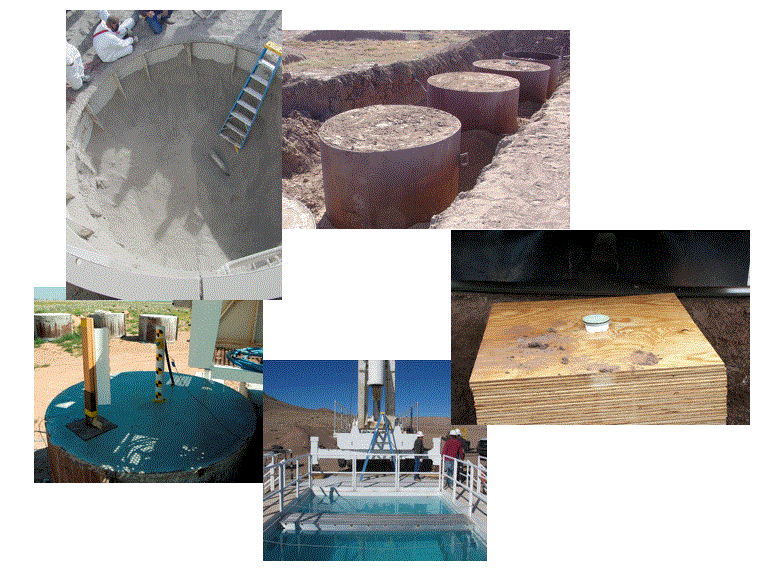The Mobile Gun Test Complex (MGTC) is a set of mobile projectile launch systems (Guns) used to test a variety of projectiles and/or targets for civilian and military customers. The MGTC enables investigation of terminal ballistic events into in-situ geologies or engineered targets. There are two types of Mobile Guns:
Davis Guns
Recoilless, propellant-driven guns. There are 3 Davis Guns:
- Ø16 in x 40 ft smooth-bore barrel
- Ø12 in x 35 ft smooth-bore barrel
- Ø8 in x 36 ft smooth-bore barrel
Gas Guns
These use compressed air, nitrogen, or helium for propulsion. There are 2 Gas Guns:
- Ø16 in x 30 ft smooth-bore barrel (this is a conversion kit used on the 16” Davis Gun)
- Ø6 in x 18 ft smooth-bore barrel
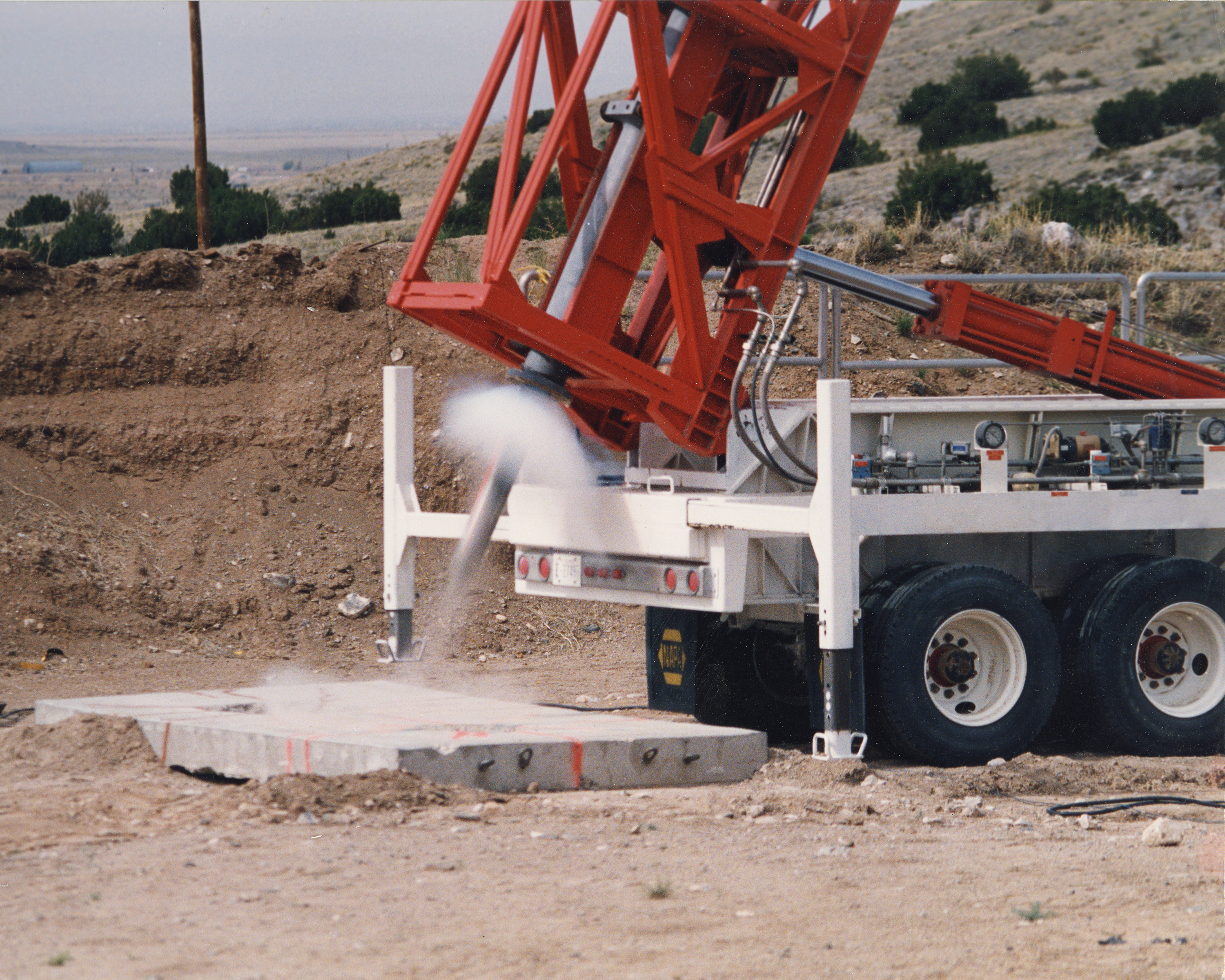
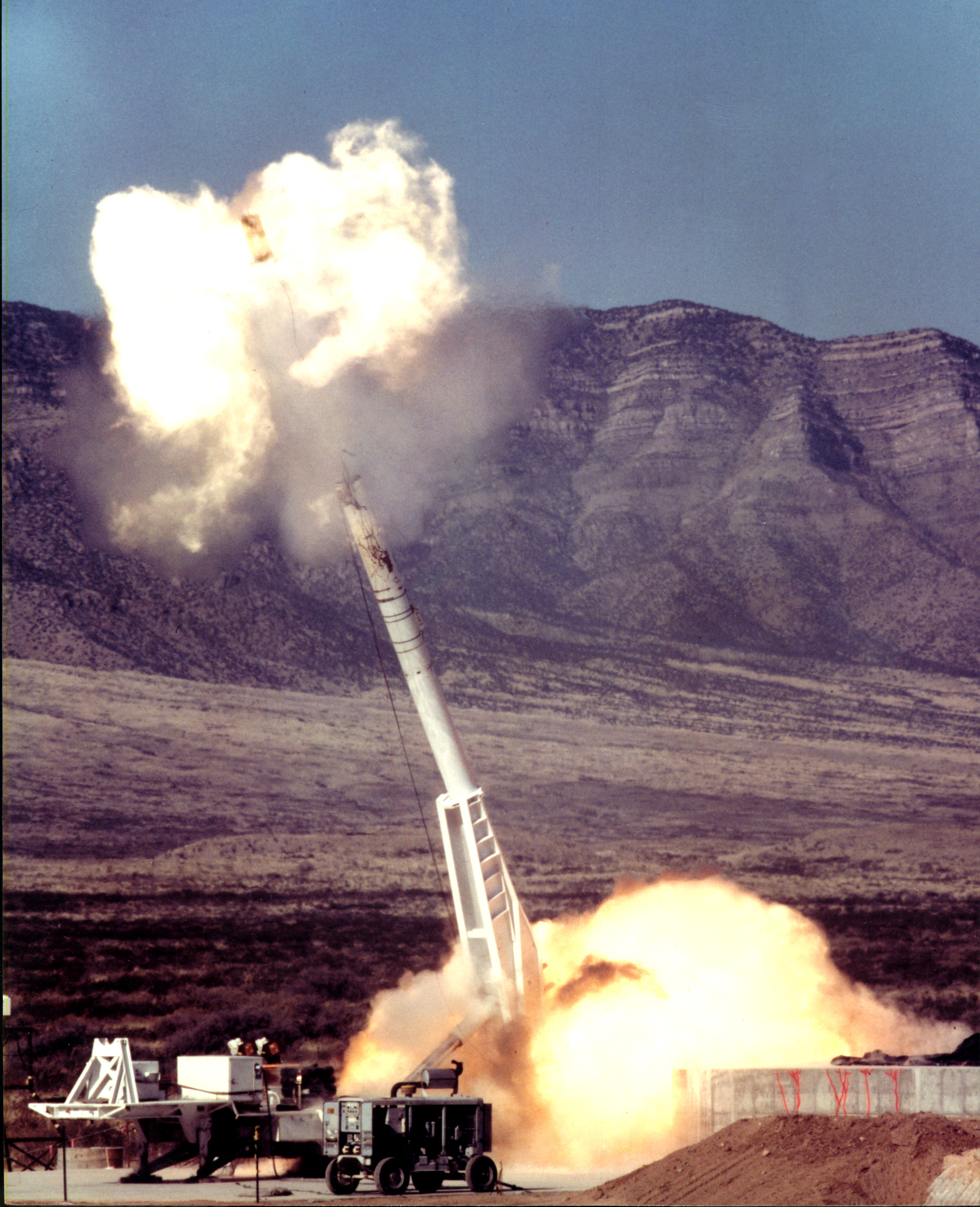
Mobile Davis Guns
The Mobile Davis Guns are trailer-mounted for mobility and testing into in-situ targets. A moving mass recoil system eliminates recoil forces in the gun support structure, allowing mobility. The hinged barrel system allows for various launch angles, from horizontal to 88 degrees. The barrel is open at both ends, and a propellant charge is loaded between the test article and the reaction mass. The test article is then launched downward into the target, and the reaction mass is lobbed upward. An on-board winch system is used to hoist the launch assembly into the barrel.
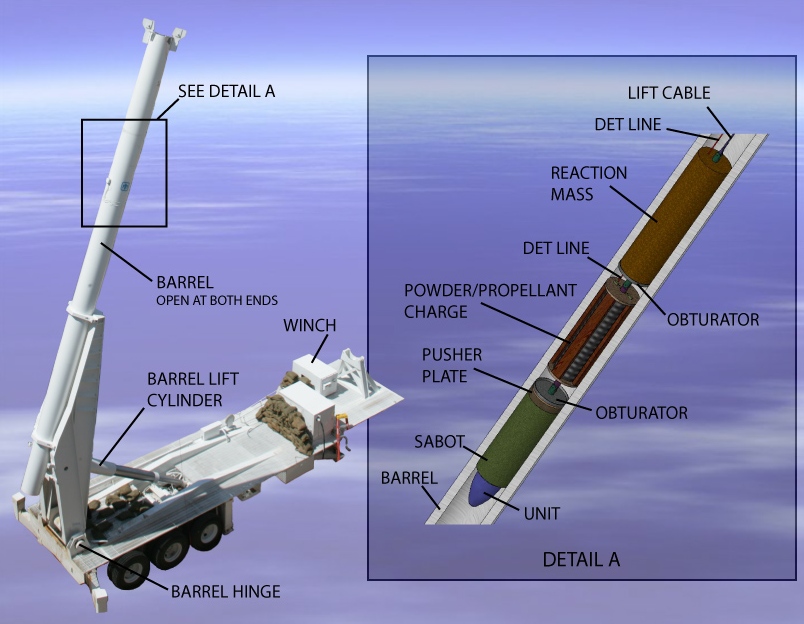
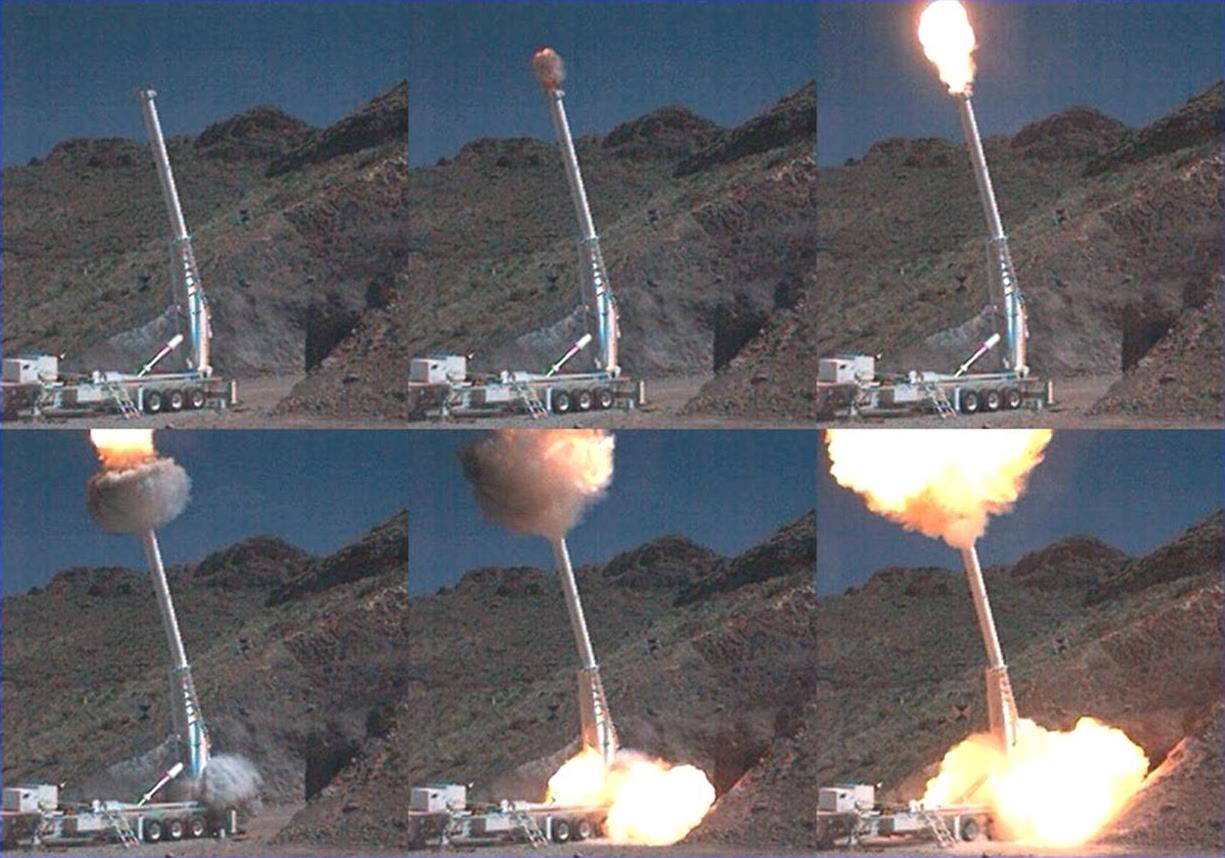
Mobile 6-in Gas Gun
This gun is trailer-mounted for mobility and testing into in-situ targets. The hinged barrel system allows for various launch angles, from horizontal to vertical. It is capable of an external helium tube trailer connection for use as propulsion gas (~15% more potential energy than air at the same pressure). It has a fast-acting, high-pressure, high-flow spool valve firing mechanism that provides repeatable precision timing for launch and muzzle exit, allowing for high-speed photometrics, flash, and other diagnostic tools.
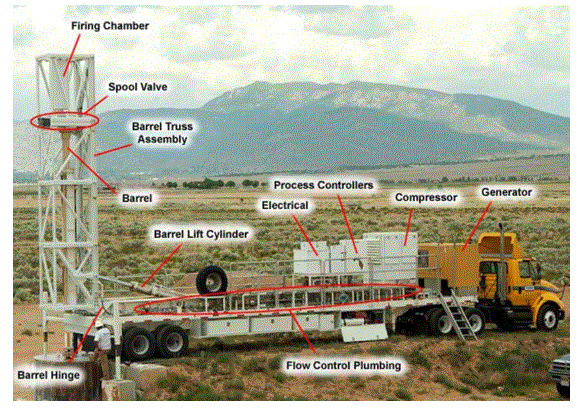
Mobile 16-in Gas Gun
This configuration is a modification to the 16-in Mobile Davis Gun. The reaction mass is replaced with a pressure vessel (firing chamber), and the barrel is capped at one end. It is designed to launch lightweight test articles with unusual geometries (fins, aero brakes, and/or terra brakes) at relatively low velocities. This Gun is trailer-mounted for mobility and testing into in-situ targets. The hinged barrel system allows for various launch angles, from horizontal to vertical.
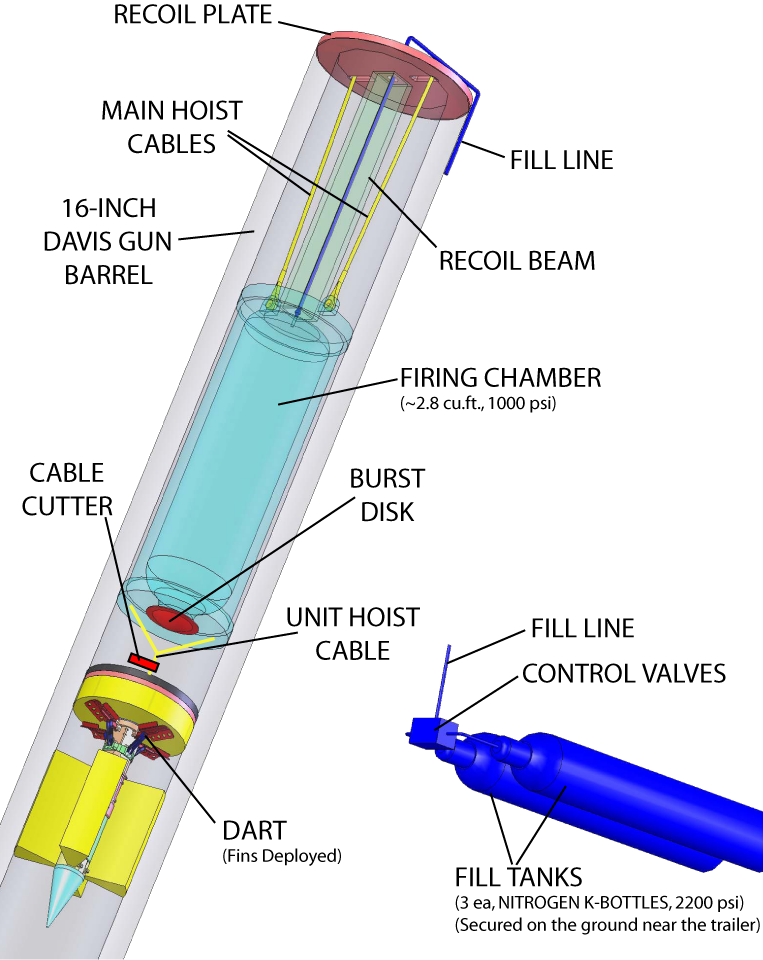
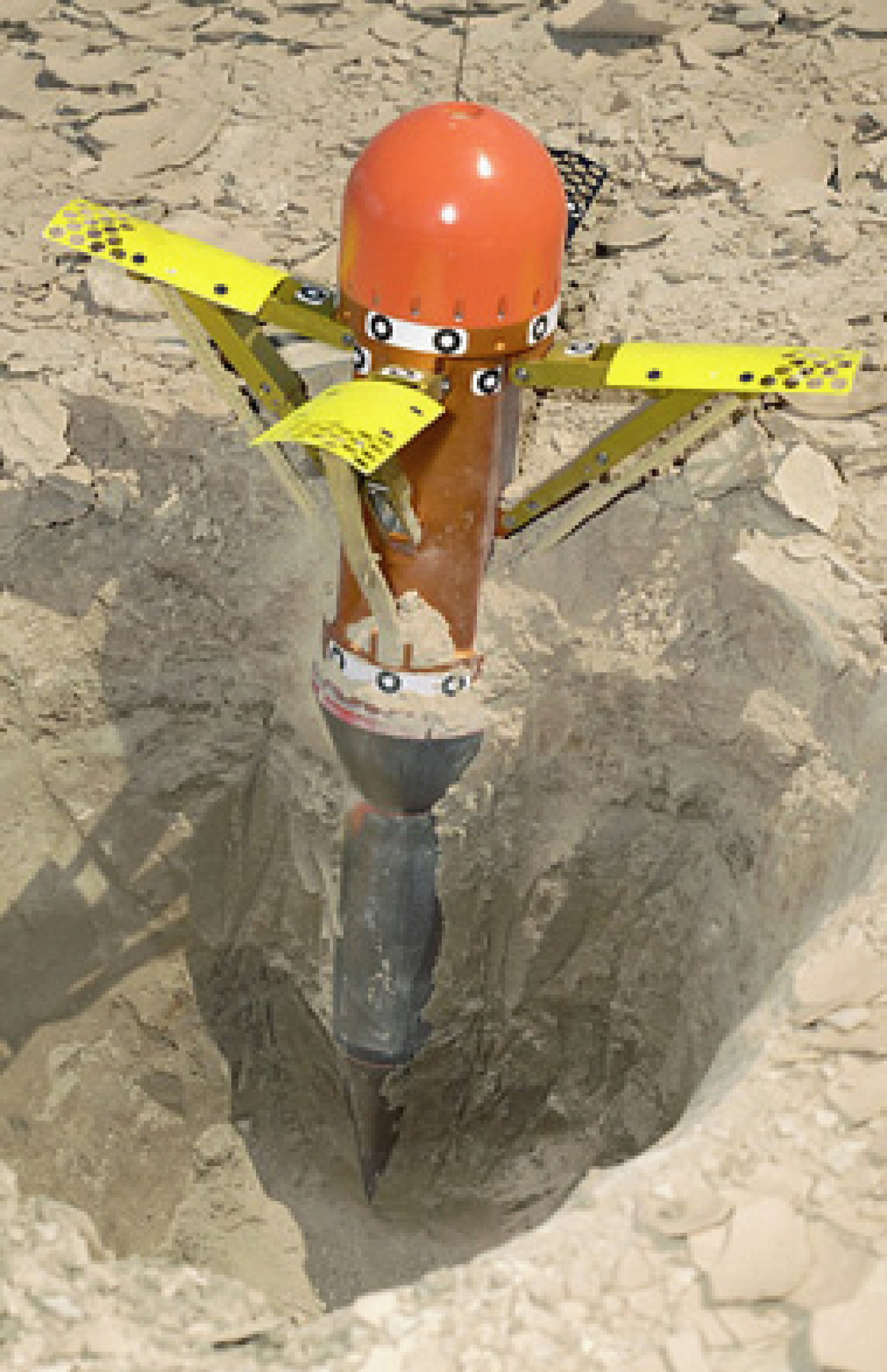
EMRTC Support
In partnership with Sandia, the Energetic Materials Research & Testing Center (EMRTC), a research division of the New Mexico Institute of Mining & Technology (New Mexico Tech or NMT), located just west of Socorro, New Mexico, provides the maintenance and operations of the Mobile Guns. Sandia owns and manages the Mobile Guns, which are stored and maintained at EMRTC, and contracts with EMRTC to provide the maintenance and operations on an as-needed basis. EMRTC has the requisite infrastructure and personnel to support the Mobile Guns, with 40 square miles of secure test range space and more than 30 separate explosive test sites and gun ranges. EMRTC website: http://www.emrtc.nmt.edu
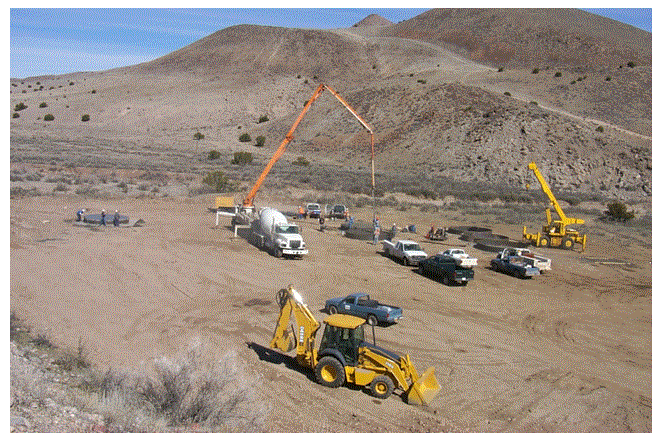
Target Design and Fabrication
The mobility of the Guns allows them to be utilized at any target location where air space and range space are controlled and access roads can be built. This allows for testing into in-situ geologies such as granite, limestone, loose soils, etc., or into in-situ structures, such as concrete bunkers.
MGTC tests do not always require in-situ targets and will sometimes require the need to design and fabricate custom targets to meet test objectives. Several engineered target structures have been developed at EMRTC for use with the Mobile Guns and can be reused as needed:
- Concrete blocks (strengths from 1000 to 15000 psi)
- Soils packed to specific hardness
- Stacked plywood
- Simulated lunar surface
- Water
